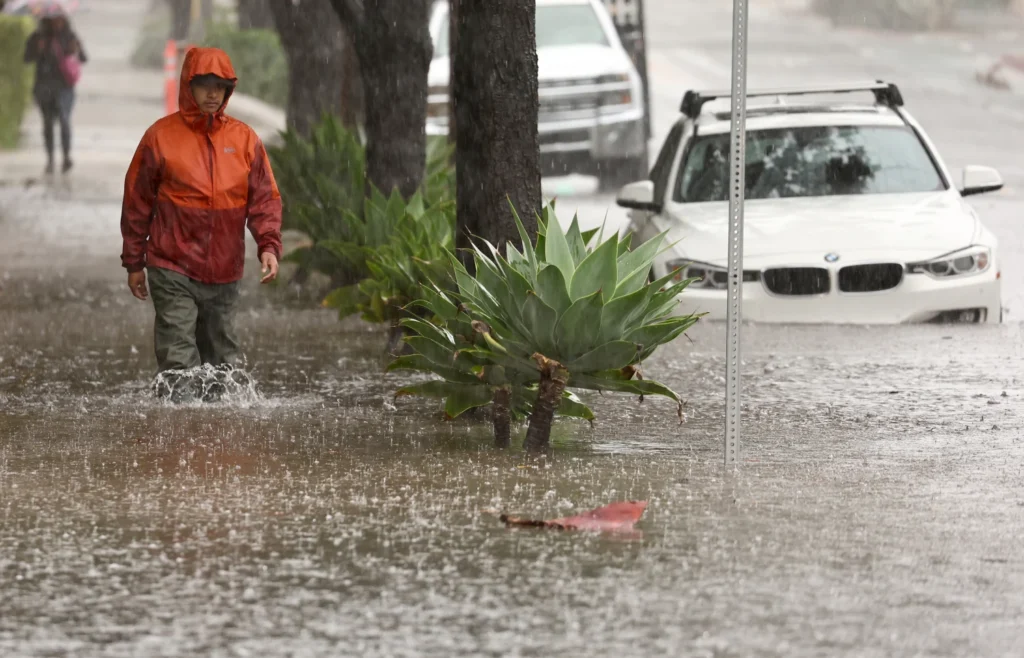California, often celebrated for its sunny skies and idyllic weather, finds itself under the ominous shadow of extreme weather once again. A dangerous storm is unleashing its fury across the region, prompting authorities to issue evacuation orders for hundreds of properties in Santa Barbara, Los Angeles, and Ventura counties. As climate change intensifies, such events are becoming more frequent and severe, posing significant challenges to residents, infrastructure, and emergency response systems. In this article, we delve into the impacts of this storm on California and explore the broader implications of extreme weather events in an era of climate uncertainty.
The Storm’s Path: Unleashing Chaos
As the storm system advances across California, it leaves a trail of destruction in its wake. Heavy rains, strong winds, and the threat of flooding and mudslides loom large over the region. Coastal areas, already vulnerable to erosion and sea-level rise, face heightened risks of inundation and storm surges. Inland communities brace for the potential onslaught of flash floods, as parched soils struggle to absorb the deluge of precipitation.
Evacuation Orders: A Race Against Time
In the face of such imminent danger, authorities have taken decisive action to safeguard lives and property. Hundreds of properties in Santa Barbara, Los Angeles, and Ventura counties have been ordered to evacuate, underscoring the gravity of the situation. Emergency response teams work tirelessly to ensure a swift and orderly evacuation process, navigating logistical challenges and coordinating with residents to facilitate their safe departure from high-risk areas.
Community Resilience: Strength in Unity
Amidst the chaos and uncertainty, communities band together to weather the storm. Neighbor helping neighbor, volunteers mobilizing to assist the vulnerable, and first responders putting their lives on the line to protect others—these acts of solidarity embody the resilience and fortitude ingrained in the Californian spirit. In times of crisis, the bonds of community solidarity serve as a beacon of hope and resilience against the onslaught of nature’s fury.
Infrastructure Vulnerabilities: A Wake-Up Call
As the storm tests the limits of California’s infrastructure, vulnerabilities come to the fore. Aging drainage systems struggle to cope with the volume of rainfall, leading to localized flooding in urban areas. Critical transportation arteries become inundated, disrupting travel and commerce. Power outages compound the challenges, leaving communities without essential services and exacerbating the impact of the storm. The event serves as a stark reminder of the urgent need to invest in resilient infrastructure capable of withstanding the increasing frequency and intensity of extreme weather events.
Environmental Impacts: Balancing Restoration and Conservation
Beyond the immediate human impacts, the storm exacts a toll on California’s diverse ecosystems. Fragile habitats face the threat of destruction, as torrential rains trigger landslides and erosion. Coastal wetlands, vital for buffering against storm surges and supporting biodiversity, suffer from inundation and saltwater intrusion. In the aftermath of the storm, efforts to restore and conserve damaged ecosystems take on added urgency, highlighting the interconnectedness of human and environmental resilience in the face of climate change.
Climate Change: A Catalyst for Crisis
At the heart of California’s current predicament lies the specter of climate change. Warming oceans fuel the intensity of storms, while shifting atmospheric patterns exacerbate drought and precipitation extremes. The state’s Mediterranean climate, characterized by hot, dry summers and mild, wet winters, becomes increasingly volatile as climate variability amplifies. As California grapples with the immediate impacts of the storm, policymakers, scientists, and communities alike are compelled to confront the underlying drivers of climate disruption and chart a course towards resilience and sustainability.
Building a Resilient Future: Towards Climate Adaptation
In the face of escalating climate risks, proactive adaptation measures are essential to safeguarding California’s future. Investments in green infrastructure, such as permeable pavements and urban green spaces, enhance flood resilience while providing multiple co-benefits, from improved air quality to enhanced biodiversity. Land-use planning and zoning regulations play a crucial role in minimizing exposure to natural hazards, steering development away from high-risk areas and promoting sustainable, climate-smart growth. Robust early warning systems and emergency preparedness initiatives empower communities to anticipate and respond effectively to extreme weather events, saving lives and livelihoods in the process.
Conclusion
As California navigates the treacherous waters of yet another extreme weather event, the resilience and resolve of its people are put to the test. From evacuation orders to infrastructure vulnerabilities, environmental impacts to climate change adaptation, the storm serves as a sobering reminder of the urgent need for collective action in the face of climate uncertainty. By harnessing the power of community solidarity, innovation, and adaptive governance, California can build a more resilient future—one that withstands the fury of nature while embracing the promise of sustainability and stewardship for generations to come.







